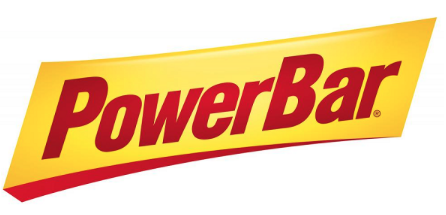Nutrition
For a Middle Distance triathlon or other 4-7 hour endurance event, nutrition is an incredibly important factor. In shorter distance triathlons you can get away with making some nutrition mistakes; during a Middle Distance triathlon, you are far more likely to feel the wrath of any nutrition errors. In fact, when you talk to athletes who did not have a good race, they will often mention nutrition as the main reason why things did no go as planned. Here, we’ll share the basics of endurance sports nutrition: a few general guidelines and some of the most common mistakes. (Note: For a deeper dive into nutrition-related questions and specific advice appropriate for your body weight, sweat rate, and fitness level, we recommend that you consult with a professional sports nutritionist or registered dietician.)
Nutrition Issues
The three most important nutritional issues during a Middle Distance triathlon are:
-
“Bonking”:
“Bonking” or “hitting the wall”—that’s what happens when you don’t take in enough fuel throughout the race to sustain consistent energy. -
Dehydration:
Becoming progressively dehydrated to an extent where this limits performance and can cause muscle cramping. -
GI Issues:
Gastrointestinal problems such as stomach cramps, bloating, etc.—generally due to improper fueling—which can have a negative impact on your performance.
Fueling
The main fuel for an endurance event like the Middle Distance triathlon is carbohydrate, especially if you complete the race closer to the 4-hour mark than the 7-hour mark. Your body stores contain roughly 500 grams of carbohydrate (2000 kcal), which is not enough to make it to the finish line without refueling. In theory, this should be enough to get most athletes through the first 3 hours of a race. But topping up from the start is essential, because it takes time for carbohydrate to be absorbed. You need to start early with fueling to make sure you avoid carbohydrate depletion. Once you run out of carbohydrate stores it is extremely difficult to recover.
As a general rule, aim for 60 grams of carbohydrate per hour. This carbohydrate can come in the form of bars, gels, chews, or drinks. If you use solid foods, make sure fat, protein, and fiber content are low (no more than a few grams). What you use is entirely up to you and your personal preferences. Faster athletes tend to use more liquids and less solids because it can be difficult to chew solid food at high intensities.
To give you some idea of what 60 grams per hour equates to, it means that for every hour of the race you would need one of the following combinations:
– 2 gels and a small amount of sports drink;
– 1 gel and a bottle of a sports drink;
– 1 energy bar and half a bottle of a sports drink.
For more accurate calculations, check the nutrition labels of the specific products you plan to use.
Hydration
“Drinking to thirst” is a recommendation that works fine for the slower-paced athlete. If you are pushing the pace, you’re better off armed with a plan. Use the early part of the race, when the gastrointestinal tract is working fine, to absorb both carbohydrate and fluid. Later in the race, despite your thirst, your gut may not absorb as much. Use common sense and drink what you need, but don’t drink excessively to the point where your stomach is in discomfort. In hot environments, pay extra attention to staying hydrated—you will likely need more fluids than in a temperate climate. Don’t forget that good hydration starts before the race; hydrate well and steadily in the days leading up to your event for the best chance of success on race day.
Gastrointestinal Issues
A large percentage of athletes—approximately 30-70 percent—experience gastrointestinal problems during Middle Distance triathlons. Some of these problems are minor, but some may be so severe that they affect performance. Some athletes are more prone to develop these problems than others. The complaints they experience may be totally independent of food intake and may only happen on race day. This suggests that “race day anxiety” plays a role in GI issues. Studies have also shown that factors like fiber intake, fat intake, and the use of highly concentrated carbohydrate drinks can cause gastrointestinal discomfort. Considering these three issues, you’ll be wise to plan ahead be familiar with your race day carbohydrate sources (drinks, gels, bars), how much fluid and fuel you need to take in, and where you’ll get it (carry it, utilize the aid stations, utilize your special needs bags). Make sure you reach approximately 60g/hour of carbohydrate intake and enough fluid to avoid losing much weight (more than 2-4 pounds of weight loss during a race can signal dehydration). To get a sense of your weight loss in relation to carbohydrate and fluid intake during endurance activity, weigh yourself before and after training.
Common Race Day Mistakes
Everyone was a rookie once, and we’ve all made mistakes. In fact, even the most experienced elite-level athletes still make mistakes. To help prevent you from making the most obvious blunders, we’ve identified a few. The most common endurance sports mistakes are:
-
Sticking to a plan at all costs.
If for some unforeseen reason you cannot follow your “perfect” race plan (let’s say you lose a bottle, or you’re developing GI distress), do not continue with the plan at all costs. Be flexible and adjust your plan accordingly. One of the most essential skills that any triathlete can master is to adapt on the fly. -
Do not try something new on race day.
You may see athletes at the expo buying products for the race that they’ve never used before. Trying new things is great—but probably best reserved for training sessions. On race day, stick with products that you’ve tried and tested, and that you know you tolerate well. -
Thinking that more is better.
Drinking more and eating more is not always better. Sure, you have to take in enough fuel and fluids to provide sustained energy and keep you hydrated throughout the race. But once you achieve the basic needs, more is not necessarily better—and in some cases, it iss detrimental.
Aid Stations
Bike Course
On the bike course, you’ll find aid stations approximately every 15 miles.
The on-course nutrition will include:
- Water
- Coke
- Base Performance Hydro
- PowerBar Gels
- PowerBar Chews
- Bananas
- Ice
COVID REGULATIONS REQUIRE YOU TO CARRY YOUR OWN NUTRITION ON COURSE. LIMTED (PRE-PACKAGED) NUTRITION WILL BE AVAILABLE AT AID STATIONS. POWERBAR WILL PROVIDE BARS IN YOUR ATHLETE WELCOME BAG TO CARRY WITH YOU DURING YOUR RACE.
Run Course
On the run course, you’ll find aid stations approximately every mile.
The on-course nutrition will include:
-
- Water
- Coke
- Base Performance Hydro
- PowerBar Gels
- PowerBar Chews
- Bananas
- Ice
COVID REGULATIONS REQUIRE YOU TO CARRY YOUR OWN NUTRITION ON COURSE. LIMTED (PRE-PACKAGED) NUTRITION WILL BE AVAILABLE AT AID STATIONS. POWERBAR WILL PROVIDE BARS IN YOUR ATHLETE WELCOME BAG TO CARRY WITH YOU DURING YOUR RACE.
TrashZone
Please note that littering along the course is forbidden. You are allowed to throw away your trash only in the designated 200 meters before and after each aid station. If you are spotted littering elsewhere—including tossing cups, sponges, drink bottles, or energy gel/bar wrappers—you risk a penalty. This rule is enforced on both the bike and the run course.



